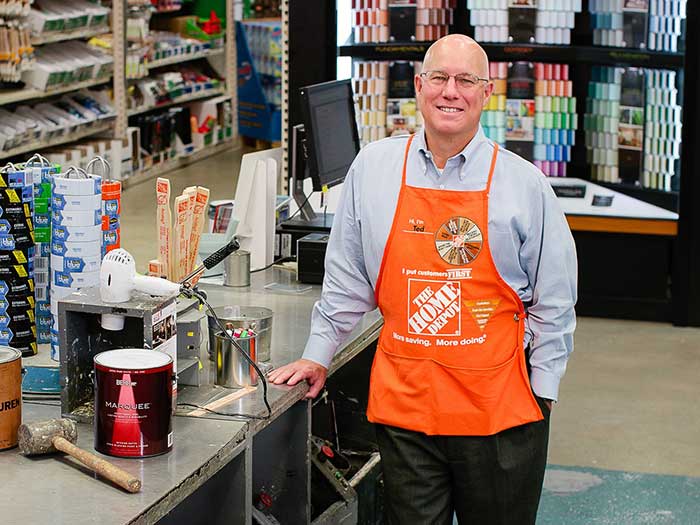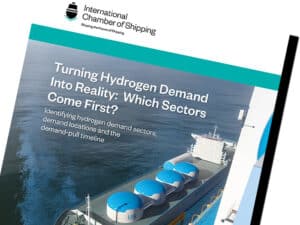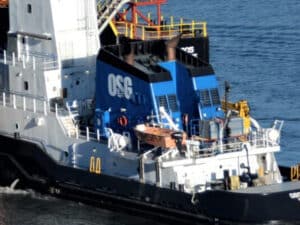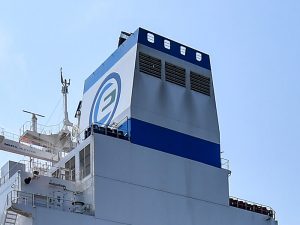
Home Depot charters in own box ship
Written by Nick Blenkey
Home Depot President and COO Ted Decker: “We have a ship that’s solely going to be ours ...”
Home improvement retail giant Home Depot Inc. has been hit so hard by shipping delays that it has chartered in its own containership, according to a CNBC report.
“We have a ship that’s solely going to be ours and it’s just going to go back and forth with 100% dedicated to Home Depot,” CNBC quotes Home Depot President and COO Ted Decker as saying in an interview.
Decker said the move is just one example of the unusual measures that the company is taking as it copes with global supply chain challenges. He told CNBC that, “on rare occasions,” Home Depot used air freight to fly in in power tools, faucets, electrical components, fasteners and other “smaller, higher value items.”
According to Statista.com, Home Depot is the third largest container importer, bringing in 520,130 TEU in 2020.
IMPORTS SURGE AT CONTAINER PORTS
Though ports have seen a surge in container volumes, port delays have been a persistent problem, with ships often waiting days at anchorage.
According to the most recent monthly Global Port Tracker report, released June 7 by the National Retail Federation and Hackett Associates, imports at the largest U.S. retail container ports saw their busiest April on record and May could turn out to have set a new all-time record.
“Vaccine rates are increasing, shoppers are back in stores and retail supply chains are working overtime,” NRF Vice President for Supply Chain and Customs Policy Jonathan Gold said. “There’s no shortage of demand from consumers, but there continue to be shortages of labor, equipment and shipping capacity to meet that demand. Supply chain disruptions, port congestion and rising shipping costs could continue to be challenges through the end of the year.”
“Supply chains are finding it difficult to keep up with demand as shipping capacity struggles,” Hackett Associates founder Ben Hackett said. “A number of vessels taken out of service when volumes were low remain in dry dock while others are delayed in congested ports, which face a lack of manpower both because of COVID-19 illnesses and the tight labor market. Many people remain hesitant about returning to work, affecting ports, rail, trucking and distribution centers.”
U.S. ports covered by Global Port Tracker handled 2.15 million TEU in April, the latest month for which final numbers are available. That was by far the busiest April on record and an increase of 33.4 percent from a year earlier, when most stores were closed by the coronavirus pandemic. April’s results followed 2.27 million TEU in March, which set the record for the most containers imported during a single month since NRF began tracking imports in 2002. A TEU is one 20-foot container or its equivalents.
Ports haven’t reported May numbers yet, but Global Port Tracker projected the month at 2.32 million TEU, which would be up 51.1 percent from the same time last year and would beat March’s total to set another new record for the largest number of containers in a single month.
June is forecast at 2.13 million TEU, up 32.8% year-over-year; July at 2.19 million TEU, up 14.2%; August at 2.26 million TEU, up 7.5%; September at 2.14 million TEU, up 1.7%, and October at 2.07 million TEU, down 6.5% for the first year-over-year decline since July 2020.
The first half of 2021 is forecast at 12.8 million TEU, up 35.3% over the same period in 2020. As with each month this spring, notes NRF, the year-over-year comparison is skewed because of the sharp decline in imports during the first half of last year. But the six-month total would put 2021 on track to easily beat 2020’s full-year total of 22 million TEU, which was up 1.9% over 2019 despite the pandemic.
Global Port Tracker, which is produced for NRF by Hackett Associates, provides historical data and forecasts for the U.S. ports of Los Angeles/Long Beach, Oakland, Seattle and Tacoma on the West Coast; New York/New Jersey, Port of Virginia, Charleston, Savannah, Port Everglades, Miami and Jacksonville on the East Coast, and Houston on the Gulf Coast.




